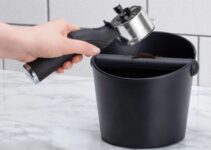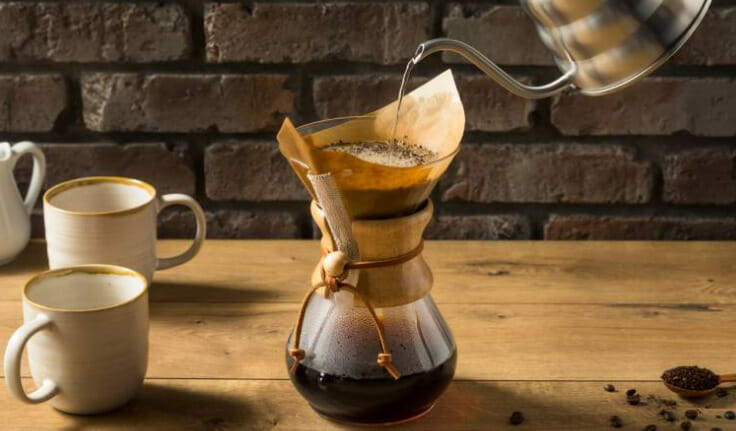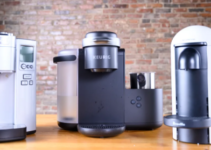Table of Contents
The commercial coffee maker is quite an important appliance that decreases the making time. It’s pretty much beneficial for users, especially in a coffee shop, doughnut shop, convenience store, employees of a business, or attendees of an event such as a convention, a meeting, or a Sunday school class.
Commercial coffee makers brew one or more pots of coffee at the same time. These also have multiple warming plates to satisfy the needs of multiple users in busy stores.
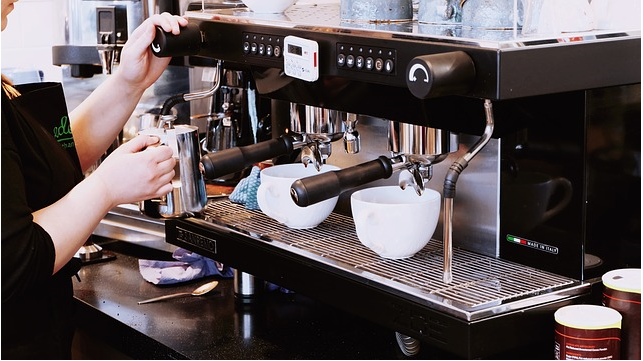
I know commercial coffee machines seem like complicated contraptions because of all their buttons and functions. But commercial coffee makers are quite convenient to use, whether you have a drip coffee maker or a semi-automatic espresso machine.
Just go through the article and check how to use the commercial coffee maker. Once you understand the perfect location and functions of the part of the coffee maker you’ll be able to use it properly. Then you can enjoy sipping coffee every time. I’m sure then you’ll also say, commercial coffee makers, are easy to use.
Additionally, all types of commercial coffee makers use the same basic principles to make your morning java so you don’t need to worry about it. After learning the process you’ll be able to use every commercial coffee maker.
Before learning how to use or how commercial coffee machines work we’ll discuss the coffee machines.
Types of Coffee Machines
Basically, there are four types of commercial coffee maker machines that are used by the market. Let’s discuss them one by one.
Manual Machines
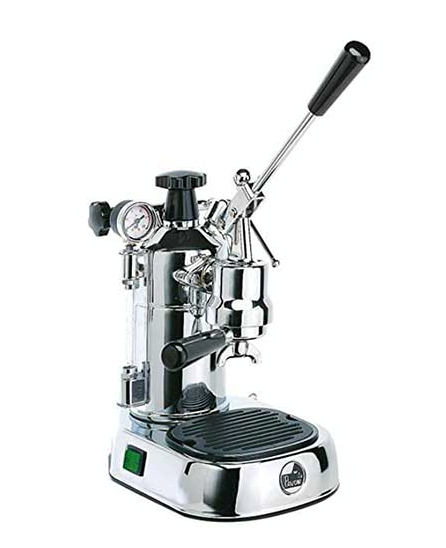
Manual coffee maker machines are often used and when they get used, they provide the best coffee taste. We can’t deny that manual machines take the real skill of a barista to use at the perfect and correct pressure. Manual machines are the crème de la crème of commercial coffee maker machines. Manual coffee maker machines can produce pretty much superior coffee to any of the mass markets.
Semi-Automatic Machines
In the semi-automatic coffee maker machine, pressure is controlled automatically but we have to manage water flow and other operations by ourselves. If you find a coffee made from a semi-automatic machine then don’t miss the chance and experience to be savored.
Automatic Machines
I think we all know that automatic coffee makers are the most commonly used machines in the commercial market. We can operate it in a similar way as we operate semi-automatic machines. But in automatic machines, we can control water flow by using some buttons.
But it doesn’t mean that we don’t need any skills, still, it requires skills to use. The most amazing quality of these automatic machines is allowing business persons to be able to focus more on their customers as well as making sure that the people they serve receive the kind of coffee experience that will have them returned to their establishment time after time.
Super-Automatic Machines
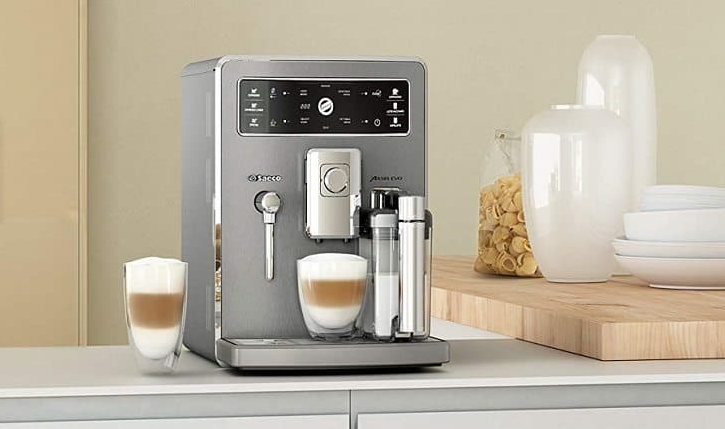
Super-automatic machines are the next generation of coffee maker machines. These machines all work automatically and don’t require any skill to operate. These super-automatic machines provide consistent results all the time.
Read our post: 11 Best Espresso Machines Under 600 | Reviews in 2025
What Does a Commercial Coffee Maker Machine Consist of?
Simply, a coffee maker machine consists of a boiler, a group head, and a portafilter. The boiler is there to feed the water mains in the commercial system, keep it half full, allow steam to build up, and also keep the coffee machine at the correct pressure.
Let’s know about the group head, the group head contains a variable number of gravity-fed nozzles connected to a pipe that runs through the boiler from the mains. Group-head allows freshwater to go in it and makes the water hot which delivers to the filters at the correct rate to drip through and infuse with the coffee oil.
That creates the delicious beverage that we all love to take. Now the steam is directed through a separate jet to heat the milk for cappuccinos and lattes. Indeed, any machine is only as good as its operator. Every user should understand how the machine works before using it.
We should know how to clean the coffee machine and how to keep it well maintained and also how to use the machine properly to ensure optimal coffee making all the time. We should keep in mind that we have to drain and refill the boiler on a regular basis. If we don’t clean it properly then the limescale build-up hinders proper conduction and stops the coffee is properly brewed. And it can also clog the filter and then the coffee will not flow as it should.
These are two issues that require proper solutions so that these two or any other problems do not occur.
Let’s start making coffee in a commercial coffee maker;
Add water to the tank
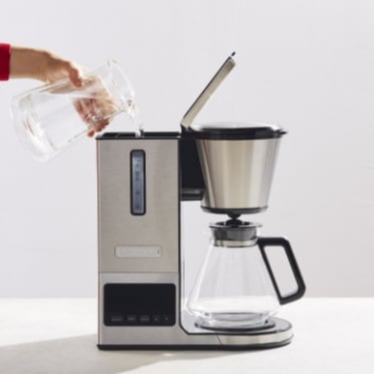
You are thinking of where to put water in the coffee maker, you have to fill the water reservoir or tank with cold water. If you use bottled water, it will also give you the best result. But if you are going to use distilled water then don’t use it because distilled water won’t do a great job, as your water does need some minerals to extract those tasty flavors. Don’t fill the reservoir above the “max fill” line.
Heat up the machine
It’s time to allow the machine to heat up, if you are using that coffee maker for the first time then plug in the machine and turn it on. Your machine can take 15 to 45 minutes to warm up properly. Warming time depends on the size of your machine. You have to wait until your machine gets warm.
Grind coffee
While starting grinding coffee, start with the medium size. Most coffee makers don’t allow you to adjust settings such as time and temperature. And changing grind size is quite an important way through which you can make your coffee taste good.
I will recommend you make sure to note your grinder setting so that you can use the same setting next time to brew. If you are using a blade grinder instead of a burr grinder, try to grind until all the particles look roughly the size of sand. A blade grinder doesn’t have the same typesetting as a burr grinder.
If you already have a bag of ground coffee beans, skip this step but if you have to grind then follow this step. You can complete this step while waiting for the coffee maker machine to warm up.
Add coffee grounds to the portafilter
Turn round the portafilter to fill it from the grinder to make the basket fill evenly. Now use your clean finger to level the grounds in the portafilter. You can also use a tamper which is a flat metal disk with a rubber handle that will help you to compact the coffee grounds into the portafilter. After that, you have to apply about 30 pounds of pressure.
If you are not sure about the portafilter, let me tell you. Portafilters are small metal dishes with long handles that can be attached to the group head. And the filter screen in the portafilter is called the basket.
This may take your attention: Can Coffee on Empty Stomach Cause Gastritis? – Explained
Lock the portafilter and brew
Some machines come with a “pre-infusion” stage which you complete first. But in some coffee maker machines, there is a button, you can simply press that button. After pressing the button the pressure forces hot water through the coffee grounds until your cup is filled with espresso.
The group head has been constructed with gravity-fed nozzles connected to a pipe that runs through the boiler. You can find it underneath the top section of the machine. Brewing takes 3 to 5 minutes in most of the machines, from the time the water starts dripping onto the coffee to when it drips all the way through the coffee grounds.
Steam milk, if desired
Now add milk if desired, fill a pitcher with the desired amount of milk, and turn on the steamer. Hold the steam tip on the surface of the milk for a few seconds. Push the steam wand completely into the pitcher and when the temperatures reach 140 °F (60 °C) it means that the milk is ready to pour into the espresso. Moreover, the steamer wand is a small metal pipe located at the end of 1 side of the machine.
How to hold and serve coffee?
Once you have got a freshly brewed perfect cup of coffee, now you have to enjoy it because the flavor and aroma of your coffee are at their peak. If you want to make your customer able to relish your coffee then you’ll need to know how long and what temperature the coffee should be held, and at what temperature it should be served.
In my opinion, the ideal temperature for holding coffee before serving is between 175-185 °F. At these temperatures, a pot of coffee should not hold for more than 20 minutes in an open-top pot or 30 minutes in a closed-top pot or container. After that coffee will start to take on a burnt flavor.
What to look for buying a commercial coffee machine?
As there are a lot of coffee maker machines available in the market, choosing the perfect one for the business is quite a difficult task. It totally depends on your requirement, it means that the one you depend on is which scale your business is and what your needs are.
If you want to start a café or a coffee shop then you’ll need to buy a machine that can serve many people. The important question is how many cups of coffee you’ll need to dispense per day. Before contacting any supplier to work on it, evaluate how many cups can be needed because this information is quite important.
The cup-per-day ratio is totally based on an 8oz serving. Low-volume coffee maker machines are good for fifty cups per day. Medium-volume coffee machines are highly recommended for 150 to 200 cups per day and high-volume machines are best for 200 to 500 cups per day.
You may like to know: What’s the Difference Between Coffee and Espresso | Explained
How much does a commercial coffee machine cost?
If you want to know how much cost will be needed for a commercial coffee machine then go through this paragraph and check. The range of commercial coffee machines is from simple to scientific. Commercial coffee maker machines can grind, brew, steam, and even ass syrups for flavor.
The price range of commercial coffee makers is from $1,000 for a basic commercial machine to over $40,000 for the top models on the market. There are many other options available that I suggest you compare several different models before purchasing it.
The price of a coffee maker depends on the tasks performed by the machine and the number of cups of coffee it produces in an hour or day. A coffee maker machine with all advanced features is capable of producing enough coffee to keep even the busiest of coffee shops.
Commercial coffee maker machines can be leased which mostly includes maintenance, servicing, and the option to upgrade the machine. The cost to lease a machine depends on the type of coffee maker machine and it ranges from $12 per week to over $100 per week.
How to use a Bunn commercial coffee maker?

Ok, some people want to know how to use a Bunn commercial coffee maker just because of their convenience we have added this information to our article. However, a Bunn coffee maker is an automatic coffee brewing machine that can brew your coffee at home in just three minutes.
Bunn coffee maker is not only easy to use but also produces a fantastic coffee that you can make at your home just by using a Bunn coffee maker. Bunn coffee maker machine for home is available in two models namely, the single-cup coffee maker and the multi-cup coffee maker.
You can easily understand because of their name that a single-cup coffee maker can make only one cup of coffee at a time. And the multi-cup coffee maker can make a maximum of 10 cups of coffee at a time.
As I mentioned above Bunn coffee maker is quite easy to use. You can place it in any corner of your house and is plugged into an external power source. Moreover, the Bunn coffee maker machine has a water reservoir where the water is stored. A coffee filter cup is used to collect ground coffee, and also a collector cup to store the brewed coffee.
The water in the reservoir will take up to fifteen minutes to heat before serving the first batch of coffee. And for this, you’ll need to fill the cold water tank. Then the water gets filled in the reservoir it will start dripping into the collector cup.
After filling the water into the tank the collector cup will show the water is heated then you have to fill the ground coffee in the filter cup which will be placed over the collector cup. Now it’s time to brew your coffee.
Simply, switch on the Bunn coffee brew machine then the water from the reservoir will start dripping through the filter cup into the collector cup. And the good thing is that it takes only three minutes to brew ten cups of coffee in a multiple-cup coffee maker machine.
How to use Hamilton Beach commercial coffee makers?
OK, it’s time to learn Hamilton Beach commercial coffee maker instructions and how to make coffee in it.
Firstly, fill the water reservoir with water to the desired level. It depends on how many cups of coffee you need. Then get ready the coffee holder basket by tenderly dampening it so that the coffee cannot fall through the holes. Now, add the required amount of coffee to the basket.
Now the step that you have to take is to place the basket on the top of the tube that leads to the pump then hold and lower the main body of the coffee urn. Keep twisting the top until it gets locked into place. Plug the machine and wait. Once the process completes the machine will automatically switch itself to heat mode to keep the coffee hot.
Final Words
In a nutshell, all coffee machines work in the same way, so don’t worry about it. Simply, water goes in. You have to add coffee, water is boiled, and water filters through the coffee grinds picking up coffee oil on the way. Then lovely black frothy liquid flows into the waiting cup.
However, only these variables in the coffee-making process, the temperature of the water, the pressure of the steam, the fineness of the ground coffee, and how tightly the coffee is packed are just a few. But one thing is understood the skilled barista controls all of these variables to produce the best coffee he or she can. I hope this article proves to be pretty helpful for you and now you have learned how to use a commercial coffee maker, have a nice day!

